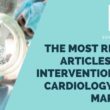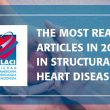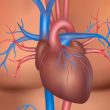01- Surgeons’ Claim on Low-Risk Patients with Aortic Stenosis Recent randomized trials including low-risk patients showed positive results for transcatheter aortic valve replacement (TAVR) compared with surgical aortic valve replacement. Read more HERE 02- Major Cause of Myocardial Injury by COVID-19 The most common cause of myocardial necrosis in patient undergoing COVID-19 infection is microthrombi. These...
The Most Read Articles in Structural Heart Disease of 2020
In this selection, we summarize for you the most important scientific news of 2020 in the field of structural heart disease. 01- Virtual ACC 2020 | COAPT: Better Quality of Life Translates into Harder End-Points After transcatheter mitral valve repair with MitraClip, the COAPT patients saw improved quality of life, better survival rate and fewer hospitalizations...
The Fellow’s Corner | 2nd Clinical Case: An Explosive Mission
Read the case presentation and join the conversation through the comments in this post! Case Introduction: An Explosive Mission! 56-year-old male patient Severe smoker Hypertension Dyslipidemia Sedentary lifestyle and stress A sibling suffered from an acute myocardial infraction Cardiac markers: Standard angina, intensity of 8-9/10, 3-to-4-h long, and dyspnea (on and off for the past...
SAPIEN 3: Good Outcomes in Bicuspids
Courtesy of Dr. Carlos Fava. Bicuspid aortic valves are found in approximately 2% of patients and represent the most frequent cause of aortic stenosis in young adults requiring valve replacement. Though TAVR has advanced significantly, this entity has not yet been included in the different randomized studies. At present, we have data from different reports,...
SOLACI-CACI 2021 Preliminary Agenda
Check out the main topics of the upcoming SOLACI-CACI 2021 Congress. Save the Date! Special Session About the COVID-19 Pandemic Managing Cardiovascular disease and Cath Lab during the COVID-19 Pandemic Live Case Transmissions Coronary and Structural cases performed by distinguished international and national operators. Coronary Track Myocardial Infarction, Left Main session, Complex...
Procedural Rescheduling Criteria in the Pandemic Era
Patients with structural heart disease are at higher risk in the face of the new coronavirus infection due to both advanced age and numerous comorbidities. All variables must be taken into account when deciding whether a patient can wait (so as to minimize the risk of exposure to the virus) or their pathology must be...
TAVR in Small Annuli: Is There a Better Valve?
Transcatheter aortic valve replacement with the self-expandable valves has shown optimal clinical and electrocardiographic results in patients with small annuli. These supra-annular prosthetic valves seem somewhat better than the intra-annular balloon expandable. TAVR in general has better functional results in terms of patient/prosthesis mismatch. This seems especially true for patients with a small annulus. The...
Treating Both Atrial Valves Improves Survival
Courtesy of Dr. Carlos Fava. There a few treatment options for tricuspid valve disease. It is practically limited to diuretics and surgery, is associated to high mortality and, generally, mitral regurgitation. Developing the “edge-to-edge” strategy with MitraClip has been shown beneficial and, at present, there are studies that claim this technique could be greatly beneficial...
TCT 2019 | PARTNER 2A at 5 Years: In Intermediate-Risk Patients, TAVR Is Still Head-to-Head with Surgery
Courtesy of the SBHCI. The 2-year results of the PARTNER 2A trial showed that transcatheter aortic valve implantation has a result similar to that of surgery in patients with aortic stenosis and intermediate surgical risk. We lacked long-term data, both clinical and related to prosthesis function. Now, at TCT 2019, researchers presented the 5-year data for this...
Very Encouraging Results for TAVR in Low-Risk Patients
Courtesy of Dr. Carlos Fava. About 12% of patients >75 years old have aortic stenosis. In 3%-4% of them, such disease is severe. Transcatheter aortic valve replacement (TAVR) has already proven to be beneficial for extreme-, high-, and intermediate-risk patients. Regarding low-risk patients, we currently have different analyses; two of them are randomized and their results are...








